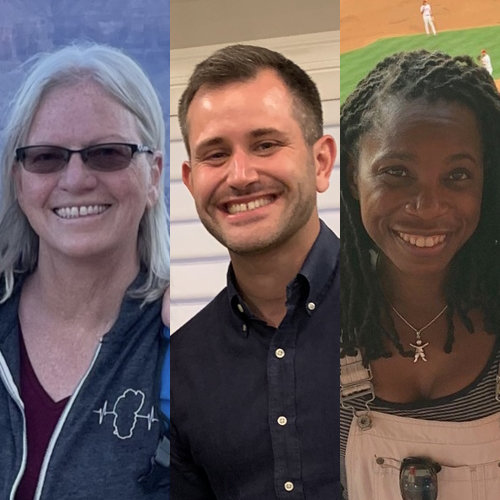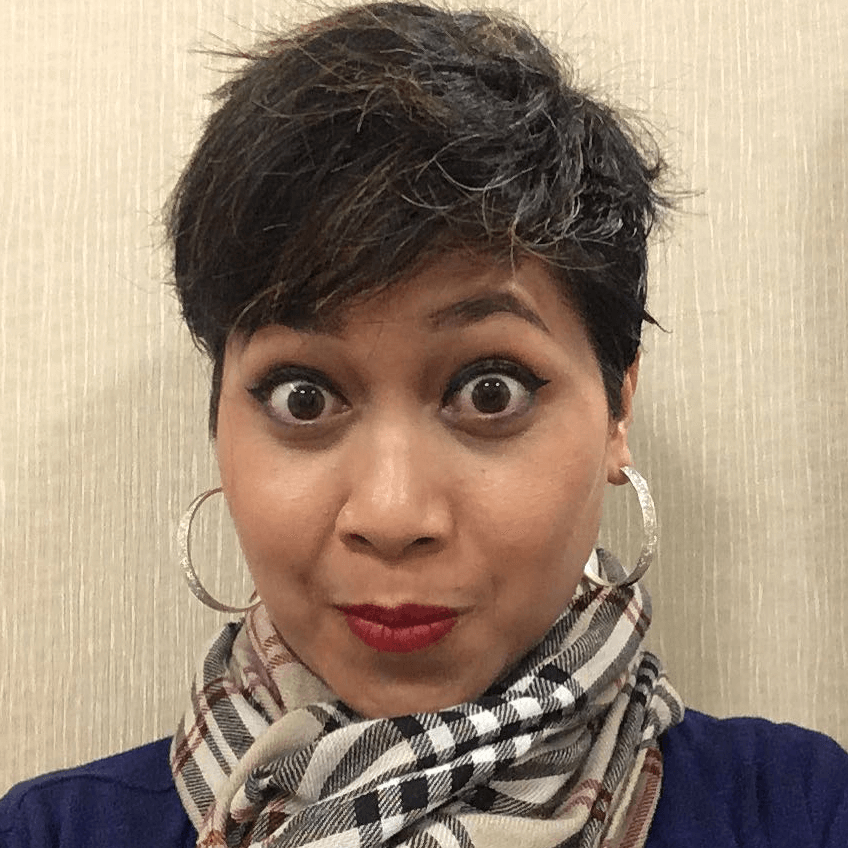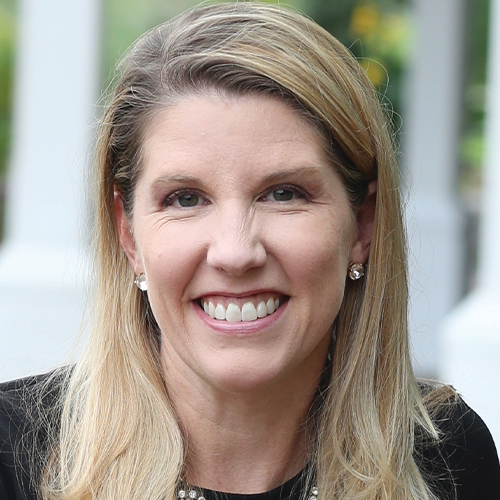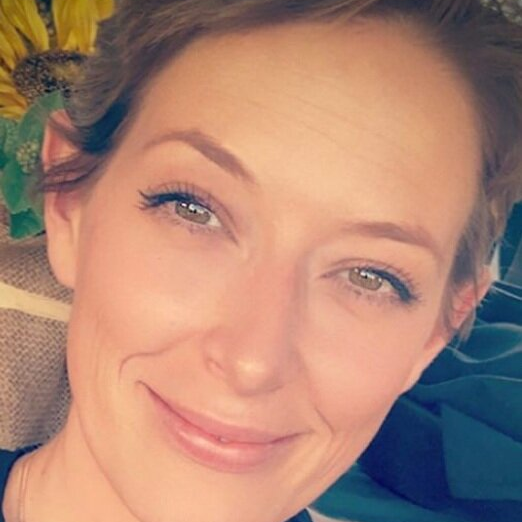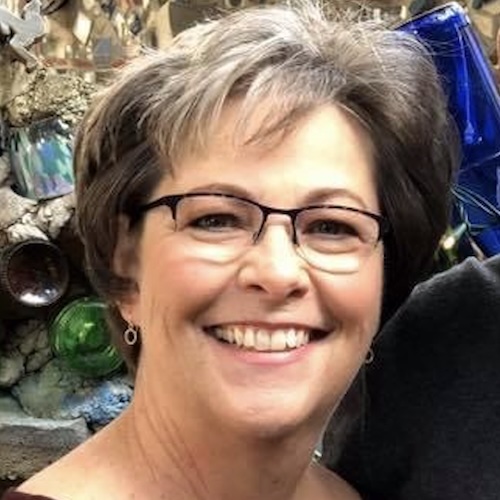SABCS 2022 Highlights
What’s NEW in Breast Cancer Treatment in 2023
Top Breast Cancer Docs Discuss Emerging Research
Kelly Shanahan was an OB-GYN with her own private practice. In 2008, she was diagnosed with breast cancer. Five years later, she learned the cancer was back and it was now stage 4. From that moment, she went from doctor to professional patient.
Since her diagnosis, she has been attending big medical conferences, including the San Antonio Breast Cancer Symposium, where thousands of the top minds in medicine and research from around the world discuss the latest in breast cancer research.
In this conversation, she along with top breast cancer doctors Dr. Paolo Tarantino with Dana-Farber Cancer Institute and Dr. Lola Fayanju with Penn Medicine discuss the big highlights from San Antonio Breast Cancer Symposium 2022.
The conference heavily focused on the new subcategory of patients: HER2-low.
This interview has been edited for clarity. This is not medical advice. Please consult with your healthcare provider for treatment decisions.

Dr. Kelly Shanahan: [When I learned about my diagnosis I thought] I can’t die before my mom. I can’t leave my daughter. I had to stop practicing. I really felt adrift. Why am I using up oxygen on this planet?
It was crazy because I felt stupid. I’m a physician. I should know 25 to 35% of people with an early-stage diagnosis, especially hormone receptor positive, will eventually become metastatic. I’m five years out. I should be cured. It really hit me hard.
If you’re treated by a community oncologist, they might have one or two people with metastatic breast cancer in their whole practice. They’re doing everything — lung, colon, blood cancers etc. They’re not going to be up to date on what is happening.
I’m five years out. I should be cured. It really hit me hard.
Dr. Kelly Shanahan,
Metastatic Breast Cancer Patient Advocate
Dr. Paolo Tarantino: For more than 20 years, we thought that HER2 was either positive or negative. Positive was about 20% of the tumors (were very aggressive) [and] needed to be treated with chemotherapy, with many agents against HER2. The other 80% [were] treated very differently.
But what happened is that in that 80%, we knew that even if we called it negative, there was some HER2, just not enough to call it positive.
Nowadays, more than half of all patients with breast cancer are called HER2-low because they have an expression of 1+ or 2+ non-amplified.
What was impressive to see is that in this very large population of patients, delivering chemotherapy with this new class of drugs that we call antibody drug conjugates — and with trastuzumab deruxtecan in particular, T-DXd or Enhertu — was very effective, much more effective than traditional chemotherapy.

Dr. Sara Tolaney at SABCS 2022
This drug has been approved and is now available. We use it to treat many patients with metastatic breast cancer.
The impact has been very large, not only because this has improved the shrinkage or the duration of the response but also the survival of patients with metastatic breast cancer.
For more than 20 years, we thought that HER2 was either positive or negative… Nowadays, more than half of all patients with breast cancer are called HER2-low.
Dr. Paolo Tarantino
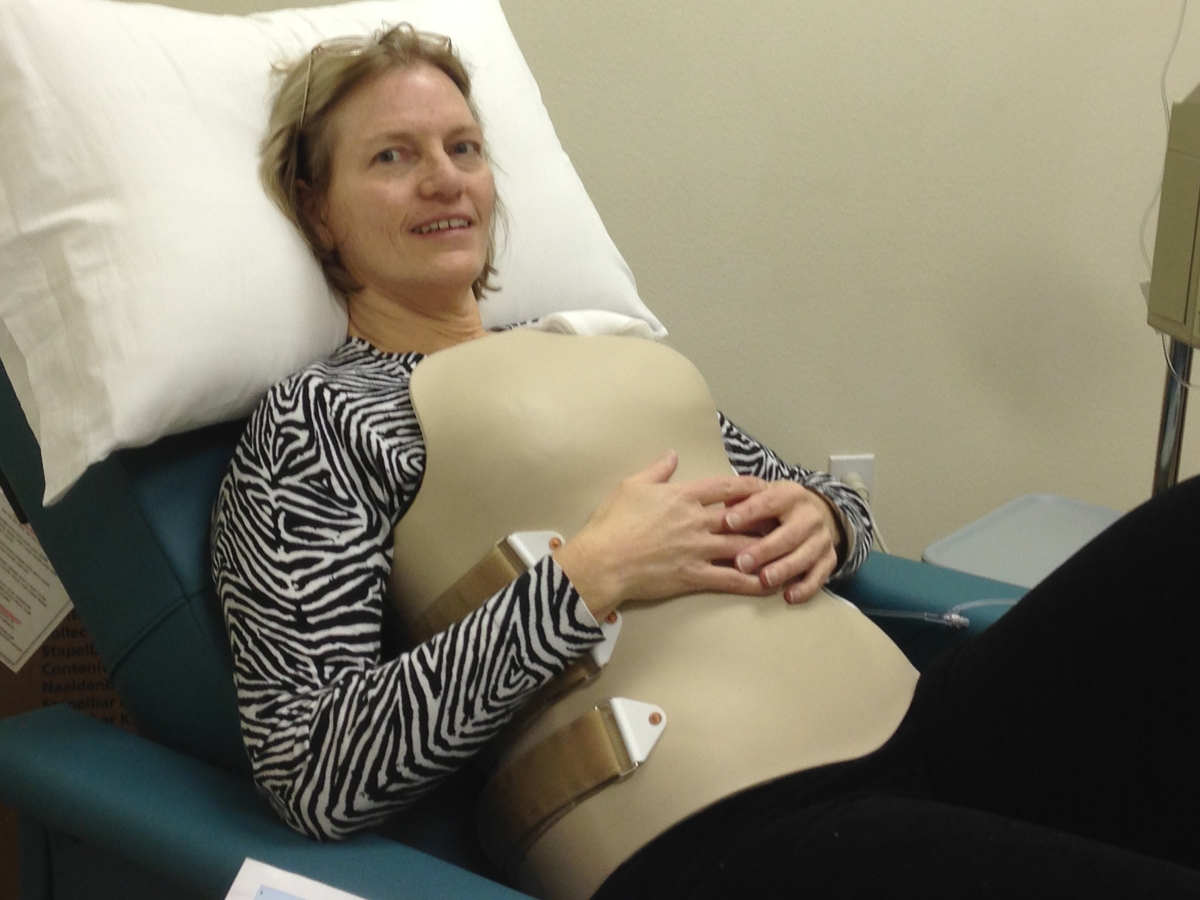
Dr. Shanahan: HER2 was originally cancer that is so aggressive and people just don’t do as well. Then Herceptin came along, Perjeta came along, and now these antibody drug conjugates.
They have made a huge difference to the point where those of us that have ER-positive disease are going, “I wish I was HER2 positive,” because there [are] so many more options and things that are working really, really well.
I think what we’re learning in some of the data from these trials is if you have a really high level of HER2 — your HER2 positive, HER2 3+ — for a lot of people, it’s going to work really, really well.
If it’s 2+, it’s still going to work but maybe not quite as well. Then 1+ and 0, there might be some efficacy. It might work even in people who have no HER2 overexpression.
In this setting, metastatic breast cancer, we really need options because so many times, patients run out of treatment options.
Dr. Tarantino
Dr. Tarantino: In metastatic breast cancer, we really need options because so many times, patients run out of treatment options.
We use all the most effective treatments that we have — endocrine treatment, taxane, capecitabine, biologic agents, anthracyclines — and in the end, we really don’t have any more effective options.
Sometimes, we have to recycle chemotherapies. We really would like to use a drug that is proven to be efficacious and even to improve survival in HER2-low patients.
Dr. Shanahan: One of the things important for patients to know is that you can look back on biopsies from your original breast cancer diagnosis or if you were diagnosed with mets from the get-go, de novo metastatic disease, that can be looked at to see, “Do I have a little bit of HER2? Do I have none at all?”
That opens up this whole avenue of these new antibody drug conjugates as a treatment option. I think that’s really exciting because the more options we have, the better.

Many of the Black women who aren’t participating in clinical trials… need to have faith in the healthcare system that has let down Black people for generations
Dr. Lola Fayanju

Dr. Lola Fayanju, Penn Medicine: I’m part of a panel on patient-reported outcomes, which are opportunities for patients to describe how they’re feeling, what symptoms they’re experiencing, [and] what psychosocial challenges they might have that might prevent them from optimizing their breast cancer journey.
There’s diversity across different communities. Many of the Black women who aren’t participating in clinical trials [don’t] necessarily need more socioeconomic help. It’s that they need to have faith in the healthcare system that has let down Black people for generations.
Many of the women who choose not to participate in clinical trials who are African American, [don’t participate] not because they can’t afford to do so. It’s that they have a justified mistrust in the system, a system that has not earned the trustworthiness of people of color.
I think that descriptions of trial results matter. Words matter.
Descriptions of trial results matter. Words matter.
Dr. Lola Fayanju
Dr. Shanahan: I had a conversation that some of these trials cost a billion dollars!
If you don’t have advocates involved early to make sure your design is going to be palatable to patients, that the questions you’re asking make sense to provide treatments, to make lives not only longer but better, you’re wasting time, you’re wasting money, [and] you’re wasting lives.
You’re an advocate. You’re an advocate for yourself.
If you were that PTA mom that raised money through bake sales to get a new playground for your kid’s school, you’d be great at fundraising for support groups [and] for research.
If you’re that person that goes to the city council meetings who’s going, “Why are you putting a stop sign here?” then maybe legislative advocacy, trying to get bills passed locally or nationally to help benefit the metastatic community is your place.

You’re an advocate. You’re an advocate for yourself… Everybody has a place and everybody has a role.
Dr. Shanahan
Breast Cancer Patient Stories
Amelia L., IDC, Stage 1, ER/PR+, HER2-
Symptom: Lump found during self breast exam
Treatments: TC chemotherapy; lumpectomy, double mastectomy, reconstruction; Tamoxifen
Rachel Y., IDC, Stage 1B
Symptoms: None; caught by delayed mammogram
Treatments: Double mastectomy, neoadjuvant chemotherapy, hormone therapy Tamoxifen
Rach D., IDC, Stage 2, Triple Positive
Symptom: Lump in right breast
Treatments: Neoadjuvant chemotherapy, double mastectomy, targeted therapy, hormone therapy
Caitlin J., IDC, Stage 2B, ER/PR+
Symptom: Lump found on breast
Treatments: Lumpectomy, AC/T chemotherapy, radiation, hormone therapy (Lupron & Anastrozole)
Joy R., IDC, Stage 2, Triple Negative
Symptom: Lump in breast
Treatments: Chemotherapy, double mastectomy, hysterectomy
Erica C., DCIS, Stage 0
Symptoms: Indeterminate calcifications found on a routine mammogram
Treatment: Double mastectomy
Margaret A., IDC & DCIS, Stage 2B
Symptoms: Pain in left breast, left nipple inverting
Treatments: Double mastectomy, chemotherapy (AC-T), radiation
Alison R., Partially Differentiated DCIS, Stage 4 Metastatic
Symptom: Lump in underarm/breast
Treatments: Chemotherapy, surgery, radiation, targeted therapy
Symptom: Sunken in nipple of right breast
Treatments: Double mastectomy, chemotherapy (AC-T), radiation, hormone therapy (tamoxifen, Zoladex)
Symptom: Lump in right breast
Treatments: Lumpectomy, double subcutaneous mastectomy, hormone therapy (tamoxifen)
Margaret A., IDC & DCIS, Stage 2B
Symptoms: Pain in left breast, left nipple inverting
Treatments: Double mastectomy, chemotherapy (AC-T), radiation
LaShae R., IDC & DCIS, Stage 2B, ER+
Symptoms: Lump in breast, pain
Treatments: Chemotherapy (Taxotere and cyclophosphamide), proton radiation
Dee D., Metastatic Breast Cancer, IDC & DCIS, ER+
Symptoms: Inability to produce milk on the left breast while breastfeeding, breast pain (palpable and radiating to the back), lumps in the breast and armpit
Treatments: Chemotherapy (AC-T), surgery (bilateral mastectomy & axillary lymph node clearance), radiotherapy, hormone therapy (Zoladex/goserelin), aromatase inhibitor (letrozole), targeted therapy (Kisqali/ribociclib)
Cat L., IDC & DCIS, Stage 2B, ER+
Symptom: Pain in left breast radiating from lump
Treatments: Bilateral mastectomy, chemotherapy, hormone therapy (tamoxifen)
Deb O., Breast Cancer (De Novo Triple Positive and ER+ HER-)
Symptoms: First instance: appearance of lump that later on increased in size, orange peel-like skin around inverted nipple, persistent ache under right arm; second instance: appearance of lump
Treatments: First instance: chemotherapy, targeted therapy, hormone therapy; second instance: surgery (mastectomy), chemotherapy, radiation therapy, CDK 4/6 inhibitor
Tammy U., Metastatic Breast Cancer, Stage 4
Symptoms: Severe back pain, right hip pain, left leg pain
Treatments: Surgeries (mastectomy, hip arthroplasty), chemotherapy, radiation therapy, hormone therapy, targeted therapies (CDK4/6 inhibitor, antibody-drug conjugate)
Nicole B., Triple-Negative Metastatic Breast Cancer, Stage 4 (Metastatic)
Symptoms: Appearance of lumps in breast and liver, electric shock-like sensations in breast, fatigue
Treatments: Chemotherapy, surgeries (installation of chemotherapy port, mastectomy with flat aesthetic closure), targeted therapy (antibody-drug conjugate), hyperbaric oxygen therapy, lymphatic drainage
Dalitso N., IDC, Stage 4, HER+
Symptoms: Appearance of large tumor in left breast, severe back and body pain
Treatments: Surgery (hysterectomy), vertebroplasty, radiation therapy, hormone therapy, clinical trial
Marissa T., ILC, Stage 4, BRCA2+
Symptoms: Appearance of lump in right breast, significant fatigue, hot flashes at night, leg restlessness leading to sudden, unexpected leg muscle cramps
Treatments: Chemotherapy, hormone therapy, PARP inhibitor, integrative medicine
Janice C., Triple-Negative Metastatic Breast Cancer, Stage 4
Symptoms: Appearance of lump in left breast near sternum, fatigue, bone and joint pain
Treatments: Surgery (lumpectomy), radiation therapy (brachytherapy), chemotherapy
Dana S., IDC, Stage 4 (Metastatic)
Symptom: Appearance of large lump in left armpit
Treatments: Targeted therapy, hormone blockers, bone infusions
Maria S., Breast Cancer, Stage 4
Symptoms: Intermittent but severe pain including a burning sensation on the side of the breast, appearance of a cyst and a lump, abnormally warm and pink-colored breast, nipple inversion, strangely liquid menstrual periods, unusual underarm odor, darkening and dimpling of the nipple, severe fatigue, night sweats
Treatments: Chemotherapy, surgeries (mastectomy, lymphadenectomy), radiation therapy, targeted therapy
- 1
- 2
